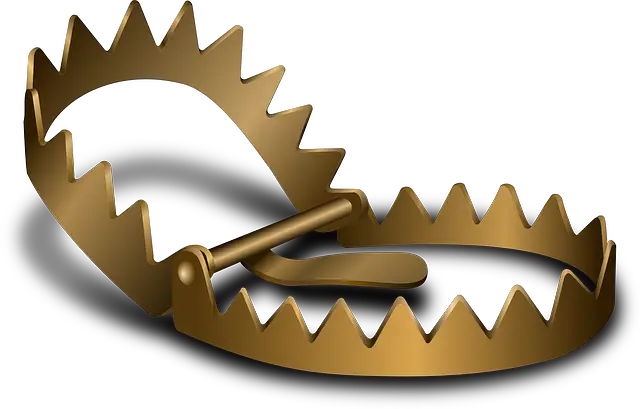A bear trap happens as too many people sell short into a falling downtrend on a chart to new lower prices too late in the move. Bear traps typically occur when sentiment becomes extremely bearish and fear is near a peak. When a bear trap is set on a chart it will usually also be very overbought technically under the 30 RSI, at the 3rd lower Bollinger Band, and near a previous long term price support. Bear traps catch short sellers chasing a price lower right before it reverses causing shorts to cover and leads to more buying and momentum back to the upside.
A bear trap usually starts with price moving lower sharply and creates expectations of a continued downtrend on the chart. Instead, the price of the chart will find a bottom and then go sideways in a range and eventually rally higher causing short sellers to be trapped on the wrong side of the move and in need to buy back to cover their short.
Bear traps can form a V pattern, W pattern, or a U pattern on the chart as they make their bottoms fast or slow.
Bear traps are usually short squeezes, as a big rally to the upside happens during a downtrend in a market due to a lack of sellers at lower prices and forced short covering. Price failing to go lower creates the need for short sellers to buy to cover with any reversal in the market trend creating heat on their positions.
Short squeezes gain momentum as more short sellers are forced to buy to cover their positions at higher prices resulting in increased trading volume on the reversal. The pressure on the short sellers to buy back their positions can be amplified by margin calls, trailing stops, and stop losses being triggered on their positions. Most short squeezes that are bear traps result in very fast and powerful moves to the upside.
A bear trap is more likely to happen in stocks with large amounts of short interest and a high short interest ratio. Bear traps have a higher probability to happen when a large amount of a stock’s float is short, a market has an extremely bearish sentiment, or sellers simply are exhausted after a long downtrend and the chart finds price levels of support with no sellers left at lower prices.
When a market reaches maximum bearish sentiment at a price level where traders and investors prefer to hold their positions instead of sell a bear trap could be set. A bear trap happens at extreme price levels of fear late in a downtrend after selling has been exhausted.
